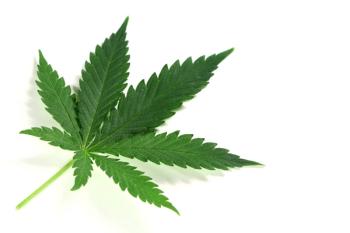
Does Size Matter for Performance? A Study of How Particle Size Influences Joint Smoking
In order to provide cannabis pre-roll manufacturers with tools to better control the delivery of cannabinoids from smoking pre-rolls, the authors examine the effect of particle size on cannabinoid delivery.
This study investigated how the quantity of cannabinoids delivered via smoking is affected by particle size of the cannabis flower packed in the joint. For example, 1-mm particle size filling yielded more potent puffs than 3- and 5-mm particle sizes. The 5-mm particle size consistently led to a longer lasting joint regardless of flower used. The large amount of variability observed between smoking experiments suggested that improving joint architecture, of which particle size is a key component, will give consumers better and reliable experiences from the joint products they purchase.
As of 2020, the world had approximately 209 million cannabis users (1). Among Canadians surveyed, traditional joint smoking is still the most common consumption method of cannabis at 70% (a decrease of 4% compared to prior year consumption) (2). In the Canadian market, pre-rolled joints captured $146 million in sales in 2021 and almost doubled the following year to $250 million (3). With huge potential for shifting consumer attitudes, the need to establish a reliable, consistent product is important for capturing customer loyalty and growing sales. There are a number of parameters that could be tuned to provide for a reliable joint and we recently examined flower particle size, which highlighted the dramatic effect a single variable could have on joint performance (4). In that work, hand ground flower was found to give the most sought-after joint qualities including a smooth smoke and a consistent burn whereas single particle sizes obtained by milling were associated with harsh smoke. By coupling two milled particle sizes within a single joint, we were able to emulate the smoking performance of hand ground flower. This offered compelling evidence that varied particle size distributions lead to better smoking performance due to interlocking of the particles within the joint structure. Building on this information, we wanted to study if and how particle size might have an influence on the delivery of cannabinoids to the consumer, both how much is delivered per puff and the total cannabinoids delivered from a whole joint. To our knowledge, no research has been done to investigate the effect of particle size on quantities of cannabinoids delivered during smoking. In this work, we aimed to develop a better quantitative understanding of how joints perform with different particle sizes of flower. This was achieved by smoking tetrahydrocannabinol (THC) and cannabidiol (CBD) joints, containing flower of a specific particle size. This work utilized a smoking machine to quantify smoke aerosols at three life stages of the joint.
Our aim is to provide cannabis pre-roll manufacturers with tools to better control the delivery of cannabinoids upon smoking of a pre-roll, thus, allowing the user to be better informed on the amounts being consumed during joint smoking. This is also of interest to hesitant consumers who may have never smoked a joint before and those who may only want to get intoxicated to a certain extent. The results herein indicate that particle size has significant effects on cannabinoid delivery.
Experimental
Joint Preparation
First, 3 g of flower (THC or CBD dominant with concentrations of 9.40 wt% and 12.49 wt% respectively, from Valens Agritech) were ground by a coffee grinder for 20 s in pulses (3 s on, 2 s off). The ground products were separated into 1-, 3-, and 5-mm particle sizes and collected. Another 3 g flower was ground in the same manner for 10 seconds. To obtain sufficient quantities of 3- and 5-mm samples, another 2 g of flower was ground by hand. Joints were rolled with approximately 0.5 g of flower and the exact mass of flower was determined by subtracting the mass of joint paper (84 mm length sized RAW pre-rolled cones).
Aerosol Sample Collection
To simulate smoking, rolled joints were fixed and smoked by a Cambustion Smoke Cycle Simulator with 50 cc per puff until completion. A total of 18 joints were smoked (three replicates for each particle size). The aerosols from three puffs smoked at the beginning, middle, and end of the joint were collected on Whatman glass microfiber filters (Grade GF/B), denoted as filters 1–3, respectively. A detailed description of the smoking process is provided in the supplementary material.
Quantitative Sample Analysis
Filters were extracted with 25 mL Fisher high performance liquid chromatography (HPLC)-grade methanol and filtered into vials using a 0.2 µm polytetrafluoroethylene (PTFE) filter. Samples were run on an HPLC Agilent 1220 Infinity II LC System equipped with a Poroshell 120 EC-C18 2.7µm 50 mm C18 column. The oven temperature was 50 °C with a flow rate of 1.00 mL/min. The VWD was set to 230 nm. 0.1% formic acid in water and 0.1% formic acid in methanol were used as eluent A and B respectively with a gradient program. Cannabinoid standards (THC, tetrahydrocannabinolic acid [THCA], cannabidiolic acid [CBDA], CBD, and cannabinol [CBN]) from Sigma Aldrich were used to prepare calibration standards ranging in concentration from 1 µg/mL to 100 µg/mL. The calibration curves for THC and CBD are reported in the supplementary material.
The analysis showed full decarboxylation during the smoking process. In our studies, little to no acid cannabinoids, for example THCA and CBDA, were observed in the aerosol samples.
Results
Effect of Particle Size on Cannabinoid Delivery
To understand how particle size influenced puff potency, we plotted the delivery of cannabinoids at the beginning, middle, and end of the joint lifecycle (shown in Figure 1 for THC joints). The delivery of THC ranged 10-fold from 0.09 mg/puff up to 0.88 mg/puff. The lowest delivery occurs at the beginning of the joint. The highest delivery is generally observed near the end of a joint’s lifecycle (5). A striking exception were the 3-mm THC joints which experienced a peak at the middle of the joint, subsequently matching the initial delivery levels again at the end of the joint.
Both the 1-mm and 3-mm joints see an approximately 50% increase in THC delivery from beginning to middle of the joint, whereas the 5-mm joint experiences a 500% increase. Similar to the 3-mm joint, the maximum THC delivery for the 1-mm joint appears to occur near the middle of the joint.
Compared to the THC range observed for THC joints, the mass of CBD delivered from CBD joints is larger in absolute terms, spanning from 2.3 mg/puff to 6.1 mg/puff.Interestingly, the three particle sizes of CBD flower furnished similar quantities of CBD per puff at the initial smoking stage (Figure 2). For 1-mm and 3-mm joints, CBD levels experience significant growth from the beginning to middle of the joint. Notably, the 5-mm CBD joint only experiences significant increases in CBD delivery towards the end of its lifecycle.
To probe the relation between puff potency and particle size, we calculated the cannabinoids delivered per puff (average of the beginning, middle, and end masses), reported in Figure 3. For both types of flower, the 1-mm particle size delivers the most cannabinoid per puff (THC: 0.67 mg, CBD: 4.75 mg). The delivery drops in half for the 3-mm THC joint (0.31 mg). Puffs from the 5-mm THC joint are only slightly less potent than the 1-mm THC joint (0.51 mg). For CBD joints, the inverse relationship between particle size and puff potency is more pronounced: puffs from the 3-mm and 5-mm CBD joints are each in turn slightly less potent than their 1-mm counterpart (4.29 and 3.45 mg, respectively). Given the data on puff counts and potencies, it would be fair to say that finer cannabis burns more easily and therefore we would expect higher potency puffs from these joints. A slower burning rate has also been observed for tobacco with larger cut widths (6). However, there is a trade-off, shown in Figure 3: joints with smaller particle sizes deliver less cannabinoids overall to the user. For THC joints, 1-mm and 3-mm particle sizes delivered 16–19 mg THC in comparison to the 5-mm joint which delivered 28 mg THC. For CBD, the 5-mm joint delivers approximately 100 mg CBD in comparison to the 1-mm and 3-mm joints which deliver around 90 mg CBD. These masses delivered translate to only 34–59% recoveries for THC joints but quantitative recoveries for CBD joints.
Effect of Particle Size on Puff Count Reproducibility
Throughout our experiments, we observed that in general, smaller particle sized joints burned more readily, as a result, these joints took less puffs to finish (see puff counts in Figure 3). For instance, the 1-mm THC joint smoked in half as many puffs as the 3- and 5-mm THC joint (28 versus 52-54 puffs). For CBD joints, the 1- and 3-mm joints took fewer puffs than the 5-mm joint. It is worth noting that, overall, the 5-mm particle size furnishes longer lasting joints that require a higher number of puffs to complete.
The uncertainty in puffs can give some insight into how reproducible and consistent the joint burning process is among particle sizes. The 3-mm THC joint smoked consistently among replicates whereas the 1-mm and 5-mm replicates smoked less consistently (± 9 and ± 5 puffs, respectively). For CBD joints, the 3-mm and 5-mm joints smoked less consistently (± 3 puffs) than the 1-mm joint (± 1 puff). The key takeaway here is that puff counts may vary widely for joints of a single particle size, which may have downstream effects on cannabinoid delivery.
Discussion
While puff count and reproducibility play an important role in the story of joint behaviour, one must also remember that a consistent, hot combustion source remains key for stable cannabinoid delivery. From the outset, the THC joints showed less reproducibility in their puff counts compared to CBD joints which hinted to us that flower characteristics play a considerable role in smoking performance. In particular, the THC joints with particle sizes in the extremes smoked the least reproducibly. Analogous to a kindling fire that burns vigorously, it would make sense that a 1-mm particle size leads to a greater propensity for uncontrolled combustion. In the case of the larger 5-mm particle size, the low reproducibility could simply be attributed to the additional puffs these joints needed to ignite at first. Moreover, as these joints took significantly longer to complete and thus have larger puff counts, it is unsurprising that the puff count reproducibility might be slightly higher. However, the kindling analogy does not appear to apply to the 1-mm CBD joint which smoked very reproducibly, suggesting that other factors might be encouraging controlled burning, such as flower humidity.
Flower characteristics also appeared to play a role in cannabinoid deliveries. We expected the quantities delivered to mirror the initial flower cannabinoid concentrations. In fact, the CBD joints delivered 200–300% more cannabinoid per joint (around quantitative recovery) than THC joints despite CBD flower being 33% more concentrated in their main cannabinoid as THC flower. Also surprising was the large drop in delivery observed for the 3-mm THC joint at the end of its lifecycle, as no other joint exhibited this behaviour. We propose this is due to these joints struggling to stay lit during the second half of burning, which led to a much lower than expected delivery at the end of the joint lifecycle and an overall low average delivery. Remarkably, the 3-mm THC joint still managed to smoke the most reproducibly in terms of puff count. Altogether, these results underpin the need to study the influence of flower characteristics such as particle size and humidity on the delivery of cannabinoids.
Conclusion and Future Work
We observed that finer particle sizes are more likely to produce more potent puffs, and conversely, coarser particle sizes require more puffs to complete a joint. Coarser particles appear to result in a larger overall delivery of cannabinoids as the joint burns more slowly. This is useful information to the consumer: some may want to enjoy a joint over a longer period of time and larger particle sizes may fulfill that role, all while offering the most bang for one’s buck. Others may prefer to consume their joint in a short time frame or to feel the psychoactive effects more quickly, therefore fewer, more concentrated puffs would be ideal in these scenarios.
Despite our experimental plan focusing on consistent joint preparation, we still found significant variability between replicates. This reinforced the importance of more research into joint architecture to understand the factors affecting joint performance. In the same vein, we observed different performances for different flower types suggesting that optimal particle sizes may not be a “one size fits all.” The reality is that consumers currently rely on anecdotal or personal evidence as to the smoking performance, in particular, smooth smoking characteristics of a joint (7). Consistent dosages are standard within the edibles categories, so it stands to reason that consumers should expect the same from pre-roll products. More consumers are looking to get intoxicated controlled and reliably, trending towards low dosage products (3). Therefore, with smooth smoking information and quantitative cannabinoid delivery information at their fingertips, consumers will be in a more informed position when it comes to joint selection for their needs. Ultimately, improved understanding of joint smoking performance will allow pre-roll manufacturers to create unique marketing propositions and stand out from the competition.
Supplemental Information
Smoking Procedure
The pre-rolls were placed in a custom 3D-printed mouthpiece and attached to a Cambustion Smoke Cycle Simulator (SCS) (as seen in Figure S1). The pre-roll is smoked using a topography as defined by a Health Canada 2014 method that was modified. It involved a 55 cc inhale for 3 s with an inhale every 5 s.
After every six inhales, the machine would have one exhale (as seen in Figure S2). The smoke from the pre-roll would pass through tubing and onto a glass fiber Whatman filter for cannabinoid capture. Once the pre-roll had been consumed, residual smoke would be present in the tubing so an additional two inhalations would be performed by the machine to ensure all the aerosol passes through the filter. The filter was later extracted with methanol and the methanol solution analysed via gas chromatography– quadrupole mass spectrometry (GC-qMS). Table SI shows the experimental raw data.
Calibration Curves and Data Analysis
The identification of cannabinoids collected from each joint was determined with cannabinoid standards. Cannabinoids with a difference in retention time less than 0.03 s are considered as the same substance. The cannabinoids identified in the joint smoking aerosol and their corresponding retention times (in s) are as follows: CBD (4.1500), CBN (5.804-5.827), and THC (6.449-6.476).
To quantify the abundance of cannabinoids extracted from each filter, the relationship between substance concentration and peak area from HPLC was derived from cannabinoid standards. All regression curves obtained reliable correlation coefficients (R2) greater than 0.999. The calibration curves for the two main cannabinoids of interest are shown in Figure S3.
References
- Global overview of drug demand and drug supply. United Nations Office on Drug Demand and Supply. 2022
- Canadian Cannabis Survey 2022: Summary. Health Canada
- Fire and Flower. (June 1, 2022). Pre-Roll Joint Sales Trends in Canada: 2022 Q1 Analysis/Comparison from
https://fireandflower.com/blog/pre-roll-joint-sales-trends . - Fritsch. (2021, June 17). The science behind the perfect joint. The Cannabis Scientist. from
https://thecannabisscientist.com/app-notes/the-science-behind-the-perfect-joint - Roggen, M. 2021 ACS talk " Don’t hold your breath: Smoke and vaping studies on cannabis products to quantify “quality.”
- Resnik, F.E., Houck, W.G., Geiszler, W.A., Wickham, J.E. Factors Affecting Static Burning Rate. Tob Sci. 1977;26:103–107
- Justice, A., Roggen, M. (2019, June). White Ash vs. Black Ash. Cannabis Business Times. from
https://www.cannabisbusinesstimes.com/article/white-ash-vs-black-ash/ .
About the Authors
Tim Sun, Dr. Hart Plommer, Sajni Shah, and Dr. Markus Roggen are with DELIC Labs in Vancouver, Canada. Direct correspondence to:
Newsletter
Unlock the latest breakthroughs in cannabis science—subscribe now to get expert insights, research, and industry updates delivered to your inbox.




